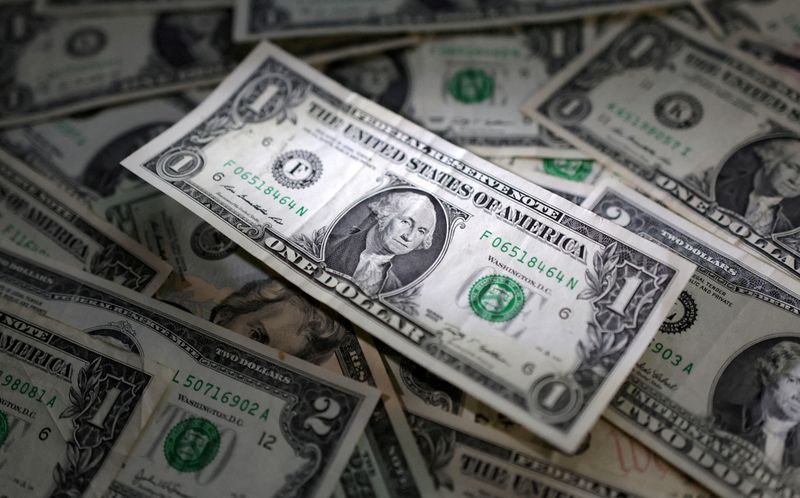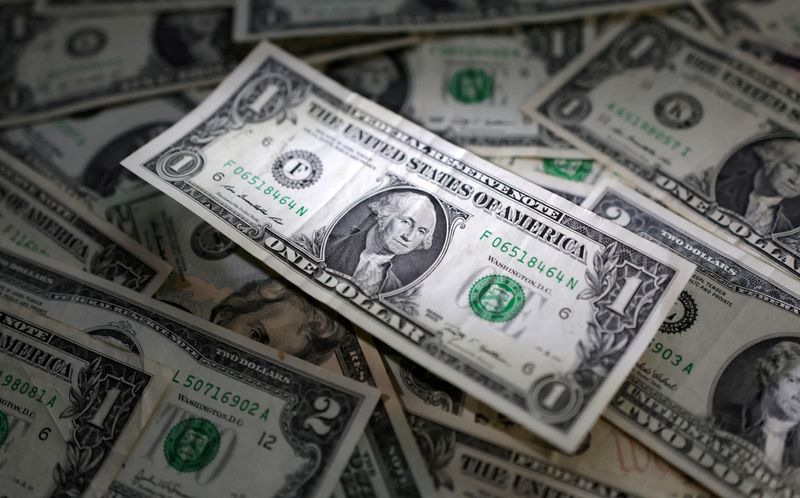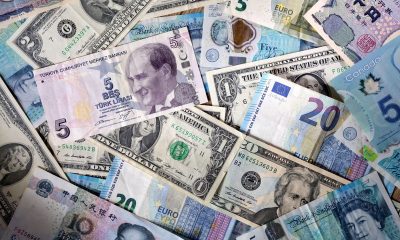Forex
Dollar retreats from 2-month high, yuan turns higher


© Reuters. FILE PHOTO: U.S. dollar banknotes are seen in this illustration taken March 10, 2023. REUTERS/Dado Ruvic/Illustration/File Photo
By Samuel Indyk
LONDON (Reuters) – The dollar fell from a two-month high on Monday following five straight weeks of gains, as risk sentiment improved in Europe, with attention already turning to the Federal Reserve’s Jackson Hole symposium which kicks off on Friday.
The , which measures the currency against six other majors, was last down 0.2% at 103.18, but still close to Friday’s two-month high of 103.68.
“Risk appetite seems a lot steadier than it has done in the last few weeks which seems to be weighing on the dollar,” said Michael Brown, market analyst at Trader X, noting that European shares are higher and Wall Street futures point to a positive open.
“In the grand scheme of things, moves are pretty limited … I’m loathed to read too much into today’s trade before Jackson Hole,” Brown added
Fed chair Jerome Powell is set to speak on Friday, and his comments may set the direction for U.S. Treasury yields, which have driven the rise in the dollar in recent weeks.
Ten-year yields rose 14 basis points last week and touched a 10-month high of 4.328%, within a whisker of a 15-year high. [US/]
The theme this year for the annual gathering in Wyoming is “structural shifts in the global economy”.
“Two things that may come across are: decades of ultra-low rates backed by ultra-low inflation may be over,” said Vishnu Varathan, head of economics and strategy at Mizuho Bank in Singapore.
“And global policy-makers may prefer to maintain restrictive real rates for a while.”
Meanwhile, the Australian dollar, at $0.6420, and the New Zealand dollar, at $0.5926, were pinned close to last week’s nine-month lows after a rate cut from China disappointed markets worried about a stalling economy.
China cut its one-year benchmark lending rate by 10 basis points (bp) and left its five-year rate unchanged, against economists’ expectations for larger 15 bp cuts to both.
“Authorities are very alert to the risks of reigniting the property market boom and that almost by default leaves the currency going lower as the way policy is eased as a kind of escape valve,” said Adam Cole, chief currency strategist at RBC Capital Markets.
“That’s what we expect going forward, and not surprisingly that spills over into G10, principally to dollar underperformance.”
The Antipodean currencies often function as a liquid proxy for the yuan, owing to the region’s exports to China, and are doubly vulnerable as the rate outlook drives up the greenback.
The had fallen to the weak side of 7.3 per dollar before firming after Reuters reported that state-owned Chinese banks were seen actively mopping up offshore yuan liquidity, a move that raised the cost of shorting the currency.
China’s currency reversed course in the offshore market and was last up 0.2% to 7.2909 per dollar.
Like the yuan, the yen is also on intervention watch, having fallen to levels around which authorities stepped in last year. It was down 0.3% at 145.89 a dollar in European trade.
The euro edged up 0.3% to $1.0906. Sterling rose slightly to $1.2756 and the Swiss franc was just above a six-week low hit last week at 0.8793 per dollar.
, which was battered to a two-month low last week as rising U.S. yields and China’s slowing economy drove a wave of selling, nursed those losses at $25,997.

 Forex3 years ago
Forex3 years agoForex Today: the dollar is gaining strength amid gloomy sentiment at the start of the Fed’s week

 Forex3 years ago
Forex3 years agoUnbiased review of Pocket Option broker

 Forex3 years ago
Forex3 years agoDollar to pound sterling exchange rate today: Pound plummeted to its lowest since 1985

 Forex3 years ago
Forex3 years agoHow is the Australian dollar doing today?

 Cryptocurrency3 years ago
Cryptocurrency3 years agoWhat happened in the crypto market – current events today

 World3 years ago
World3 years agoWhy are modern video games an art form?

 Commodities3 years ago
Commodities3 years agoCopper continues to fall in price on expectations of lower demand in China

 Economy3 years ago
Economy3 years agoCrude oil tankers double in price due to EU anti-Russian sanctions


























